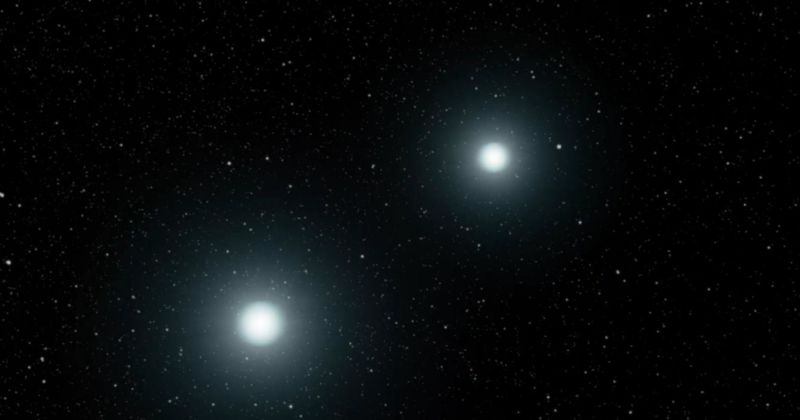The merger of two white dwarfs may end with the advent of a new neutron star
- Transfer

The fusion of two white dwarfs results in the formation of a new neutron star. The merger between astronomical bodies is happening right now. Of course, it is possible that a collision between two stars will lead to a powerful explosion. And at least until now it was difficult to answer the question of what happens when two stars collide: do they explode or does something else happen? Observing a large white dwarf, which apparently was the product of two small white dwarfs, can support "something else."
Stellar end time
When stars run out of energy, their mass determines their fate. Very large stars end spectacularly, opening with a strong explosion. When stardust settles, a neutron star or a black hole enters it. This is the end.
Small stars end a little differently. First, they blush and swell when they run out of energy. The outer mass is dumped, leaving behind a dimly glowing corpse, known as a white dwarf. White dwarfs, being small and dull, are not the easiest thing to observe. But we know that in comparison with neutron stars they do not have huge magnetic fields, large stellar winds.
A group of astronomers noticed a strange white dwarf named J005311. J005311 is in the center of the nebula and it seems that a lot of gas is being removed very quickly from it at a speed of about 16,000 km / s.
To solve the mystery, astronomers turned to the nature of neutron stars. In them, a very fast outflow of gas is possible when the star rotates rapidly. Fast rotation generates a huge magnetic field, which, in turn, accelerates charged particles in the gas. In this case, the star may be dim, but it needs a large magnetic field - about 10-100 times more than usual for a white dwarf. It seems that the only way to create a rapidly rotating magnetic field is to merge two white dwarfs.
J005311 is above the Chandrasekar limit, which means it is massive enough to explode like a supernova. The alternative is that it collapses, forming a neutron star, while creating a small ball of fire. The fact that the supernova was not born tells us that when white dwarfs collide, they do not explode. Instead, they can throw out enough material to avoid an explosion, and gently fuse into a neutron star.
Models show that the creation of a neutron star from a large white dwarf can take several thousand years. This means that from an astronomical point of view, the merger of J005311 basically happened yesterday, and we are still expecting the consequences.
